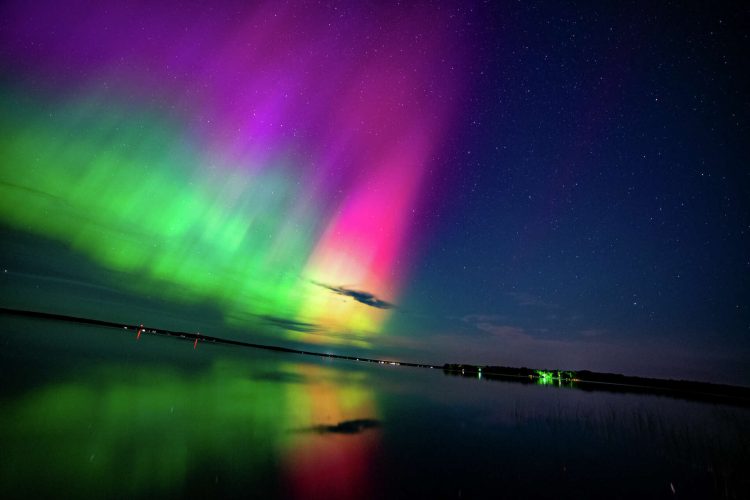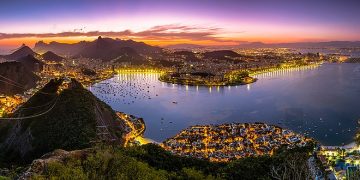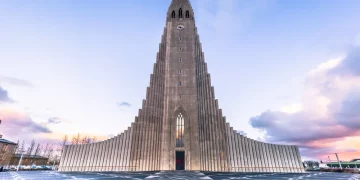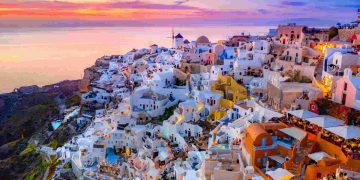1. Introduction to the Allure of the Northern Lights as a Natural Phenomenon
The Northern Lights, also known as the Aurora Borealis, have long fascinated humanity with their ethereal beauty and enigmatic origins. For centuries, these colorful light displays have stirred wonder and awe in people across the Northern Hemisphere, becoming one of the most sought-after experiences in the world of travel. The spectacle of vibrant greens, pinks, purples, and reds dancing across the Arctic skies is a testament to the mysterious and powerful forces of nature at work.
The Northern Lights are created when charged particles from the sun interact with the Earth’s magnetic field. These particles collide with gases in the Earth’s atmosphere, primarily oxygen and nitrogen, causing the gases to ionize and emit light. The resulting displays are not only visually mesmerizing but also speak to the intangible connection between humanity and the natural world.
While science explains the phenomenon behind the Northern Lights, their cultural significance stretches back to ancient civilizations, with myths, legends, and spiritual beliefs shaping how people perceive these lights. Whether they are seen as a divine message, the souls of the departed, or a sign of good fortune, the Northern Lights hold a unique place in the collective human imagination. In addition to their physical allure, the Northern Lights evoke a sense of wonder, mystery, and reverence that transcends cultural boundaries.
For those fortunate enough to witness this breathtaking natural wonder, the Northern Lights offer an unforgettable experience. However, catching a glimpse of the Aurora Borealis is no simple task. The phenomenon is elusive, requiring the right conditions of weather, geography, and timing. As such, travelers must be prepared to venture into the remote and often frigid northern latitudes, where the Northern Lights are most visible.
In this article, we will explore the best destinations to view the Northern Lights, delve into the local myths and stories surrounding the phenomenon, and provide valuable tips for planning a successful trip to experience this awe-inspiring natural display.
2. Best Locations to View the Northern Lights: Iceland, Norway, Sweden, Finland
The Northern Lights are best observed within the auroral oval, a ring-shaped zone around the magnetic pole. This means that countries close to the Arctic Circle offer the best chances of seeing the Aurora Borealis, with some of the top destinations including Iceland, Norway, Sweden, and Finland. Let’s take a closer look at the best locations to view the Northern Lights in these regions.
Iceland: A Land of Fire and Ice
Iceland is one of the most popular destinations for travelers hoping to witness the Northern Lights. Its vast, rugged landscapes, minimal light pollution, and remote location make it an ideal place for aurora sightings. The country’s dramatic terrain, including glaciers, volcanoes, hot springs, and lava fields, provides an incredible backdrop to the Northern Lights, adding to the magic of the experience.
The best time to see the Northern Lights in Iceland is from late September to mid-April, with peak conditions occurring during the darkest months of the year (December to February). Popular locations for aurora viewing include the Þingvellir National Park, the Snæfellsnes Peninsula, and the area around Lake Myvatn. For a truly magical experience, some visitors opt to stay in remote lodges or even take a dip in the Blue Lagoon while watching the auroras dance above.
Norway: The Arctic Beauty
Norway, particularly its northern regions, offers some of the best opportunities to witness the Northern Lights. The country’s Arctic locations, such as Tromsø, Alta, and the Lofoten Islands, are renowned for their clear skies and ideal aurora-viewing conditions. Tromsø, often referred to as the “Gateway to the Arctic,” is a prime spot for aurora enthusiasts due to its location above the Arctic Circle.
Norway is unique in that it provides not only excellent aurora viewing but also an abundance of outdoor activities. Visitors can combine their aurora-chasing adventure with dog sledding, snowmobiling, and even northern lights cruises. Additionally, Norway’s dramatic landscapes, with towering fjords, snow-capped peaks, and frozen seas, create a stunning setting for the Northern Lights.
Sweden: A Northern Lights Wonderland
Sweden offers an equally enchanting experience for those seeking the Northern Lights. The Swedish Lapland, located above the Arctic Circle, is one of the best areas in the world to witness the Aurora Borealis. The city of Kiruna, known for its ice hotel and proximity to the northern lights, is a popular base for travelers looking to explore the surrounding wilderness and catch a glimpse of the lights.
Sweden also offers unique experiences such as staying in a glass igloo or a luxury ice hotel, allowing travelers to watch the Northern Lights from the comfort of their accommodations. Sweden’s vast forests, frozen lakes, and serene landscapes provide an ideal environment for those who seek a peaceful, secluded aurora experience.
Finland: A Magical Winter Wonderland
Finland is another prime destination for those eager to witness the Northern Lights. The Finnish Lapland, especially around Rovaniemi and Kakslauttanen, offers a chance to see the auroras in one of the most magical settings on Earth. Finland is known for its pristine, snowy landscapes, traditional saunas, and a strong connection to nature, which adds to the mystique of the aurora experience.
In Finland, travelers can stay in unique accommodations, such as igloos made of glass or ice, where they can relax and enjoy the Northern Lights in complete comfort. Finland’s deep forests, tranquil lakes, and wide-open spaces also provide a serene backdrop for the auroras, making it an unforgettable destination for nature lovers and adventure seekers alike.
3. Local Myths and Cultural Stories Surrounding the Northern Lights
The Northern Lights have inspired countless myths and legends across the cultures of the Northern Hemisphere. For many indigenous peoples, the Aurora Borealis was a powerful and mysterious force, and its appearance in the sky was seen as a significant event. Here are just a few of the fascinating myths and cultural stories surrounding the Northern Lights.
Inuit Mythology: The Souls of the Departed
In Inuit culture, the Northern Lights were believed to be the spirits of the deceased, playing games with one another in the sky. The lights were thought to represent the souls of their ancestors, and their movements were interpreted as signs of the spirits’ activities. Some Inuit people also believed that the auroras were created by the reflections of firelight from the ice, while others saw them as a source of power, guiding the living with their otherworldly glow.
Finnish Folklore: The Fox Fires
In Finland, one of the most popular myths surrounding the Northern Lights involves a mythical creature called the “fire fox.” According to Finnish folklore, the fox would run across the snow-covered hills, its tail sweeping the ground and causing sparks to fly into the sky, creating the shimmering lights. The lights were referred to as “revontulet,” or “fox fires,” and the myth is still celebrated today in Finnish culture.
Norse Beliefs: The Bifrost Bridge
In ancient Norse mythology, the Northern Lights were associated with the Bifrost Bridge, a magical rainbow bridge that connected the realm of the gods with the world of humans. The auroras were believed to be the shimmering light of the Bifrost, which was used by the gods to travel between worlds. This myth highlights the mystical and divine nature of the Northern Lights in Norse culture, which saw them as a celestial pathway.
Sami Folklore: A Spiritual Connection
The indigenous Sami people of Northern Scandinavia also have their own legends surrounding the Northern Lights. In Sami culture, the auroras were often seen as spirits of the deceased, but they were also thought to have a direct connection to the spiritual world. Some believed that the auroras were the souls of shamans, traveling through the sky to communicate with the living. The Sami people also viewed the lights as powerful omens and would pay respect to the auroras by remaining silent when they appeared.
4. Tips for Planning a Trip to Catch the Northern Lights
Catching a glimpse of the Northern Lights is a once-in-a-lifetime experience for many travelers, but it requires careful planning. Here are some essential tips for maximizing your chances of witnessing this natural wonder.
1. Choose the Right Time:
The best time to see the Northern Lights is during the winter months, from late September to early April. The darkest months, from December to February, offer the clearest skies and the longest nights, providing the ideal conditions for aurora sightings. Keep in mind that the Northern Lights are more likely to be visible during periods of high solar activity, which follows an 11-year solar cycle.
2. Head to Northern Regions:
As mentioned, the Northern Lights are most visible in areas above the Arctic Circle. Look for destinations like Iceland, Norway, Sweden, and Finland, where you are more likely to experience clear skies and minimal light pollution. Avoid city lights and opt for remote locations to increase your chances of spotting the auroras.
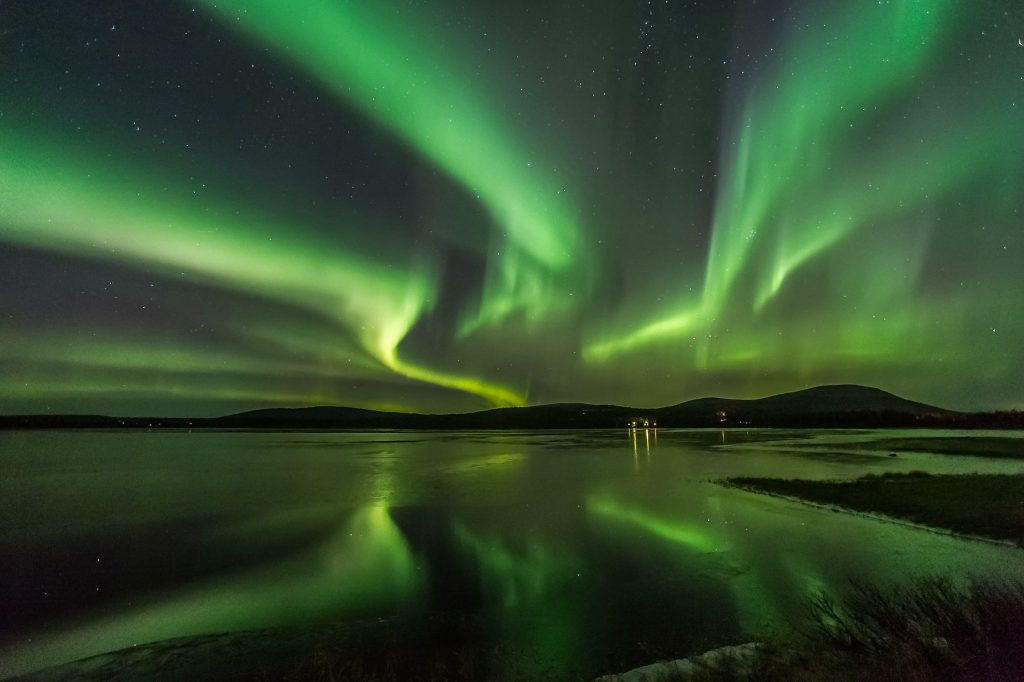
3. Be Patient and Flexible:
The Northern Lights are a natural phenomenon, and their appearance is never guaranteed. It is essential to be patient and flexible with your plans, as the auroras may only appear for a short time, or they may not appear at all. Keep an eye on aurora forecasts, but also be prepared for the possibility of disappointment.
4. Dress Warmly:
Given that the best places to see the Northern Lights are often located in frigid, Arctic regions, it is crucial to dress warmly. Layer up with thermal clothing, a waterproof outer layer, warm gloves, hats, and boots. You’ll be spending long hours outside, so comfort and warmth are key.
5. Join an Aurora Tour:
Many destinations offer guided tours specifically designed for aurora hunters. These tours often take you to the best spots for viewing the Northern Lights, away from city lights, and provide local experts who can offer
insight into the science and mythology of the aurora. This can be a great option for those who want to increase their chances of seeing the lights.
5. How to Combine a Visit to the Northern Lights with Local Experiences
While the Northern Lights are the main draw, the destinations where they are visible also offer many other cultural and natural experiences. To make the most of your trip, consider combining aurora viewing with local traditions and activities.
Iceland: Explore the Golden Circle and Geothermal Springs
In addition to aurora watching, Iceland offers a wealth of natural wonders, such as the Golden Circle route, which includes the Þingvellir National Park, the Gullfoss waterfall, and the Geysir geothermal area. Visitors can also relax in the geothermal waters of the Blue Lagoon, visit ice caves, or explore the volcanic landscapes.
Norway: Experience Sami Culture and Arctic Wildlife
While in Norway, take the opportunity to learn about Sami culture, visit indigenous villages, and explore the rugged Arctic landscape. Dog sledding, snowshoeing, and whale watching are also popular activities, making it easy to combine adventure with cultural immersion.
Sweden: Stay in an Ice Hotel and Try Traditional Lapland Cuisine
Sweden’s ice hotels and cozy cabins are the perfect place to rest after a night of Northern Lights viewing. Don’t miss the chance to try traditional Swedish Lapland cuisine, including reindeer, cloudberries, and hearty stews. Visit the Abisko National Park for some of the best Northern Lights viewing in the country.
Finland: Enjoy a Sauna and Visit Santa Claus Village
In Finland, you can combine Northern Lights viewing with the ultimate relaxation experience—sauna bathing. Many hotels offer private saunas, where you can unwind after a day of adventure. And if you visit Rovaniemi, the official home of Santa Claus, you can meet the man himself while enjoying the festive winter atmosphere.
Conclusion
The Northern Lights are one of the most awe-inspiring natural phenomena in the world, captivating travelers with their mystical beauty and cultural significance. Whether you are traveling to Iceland, Norway, Sweden, or Finland, these destinations offer some of the best opportunities to witness this stunning display of nature.
By learning about the local myths and cultural stories surrounding the Northern Lights, travelers can deepen their appreciation for this mesmerizing phenomenon. With careful planning, patience, and a bit of luck, witnessing the Northern Lights can be a life-changing experience—one that connects you to the wonders of the natural world and the rich cultures that call the Arctic regions home.


